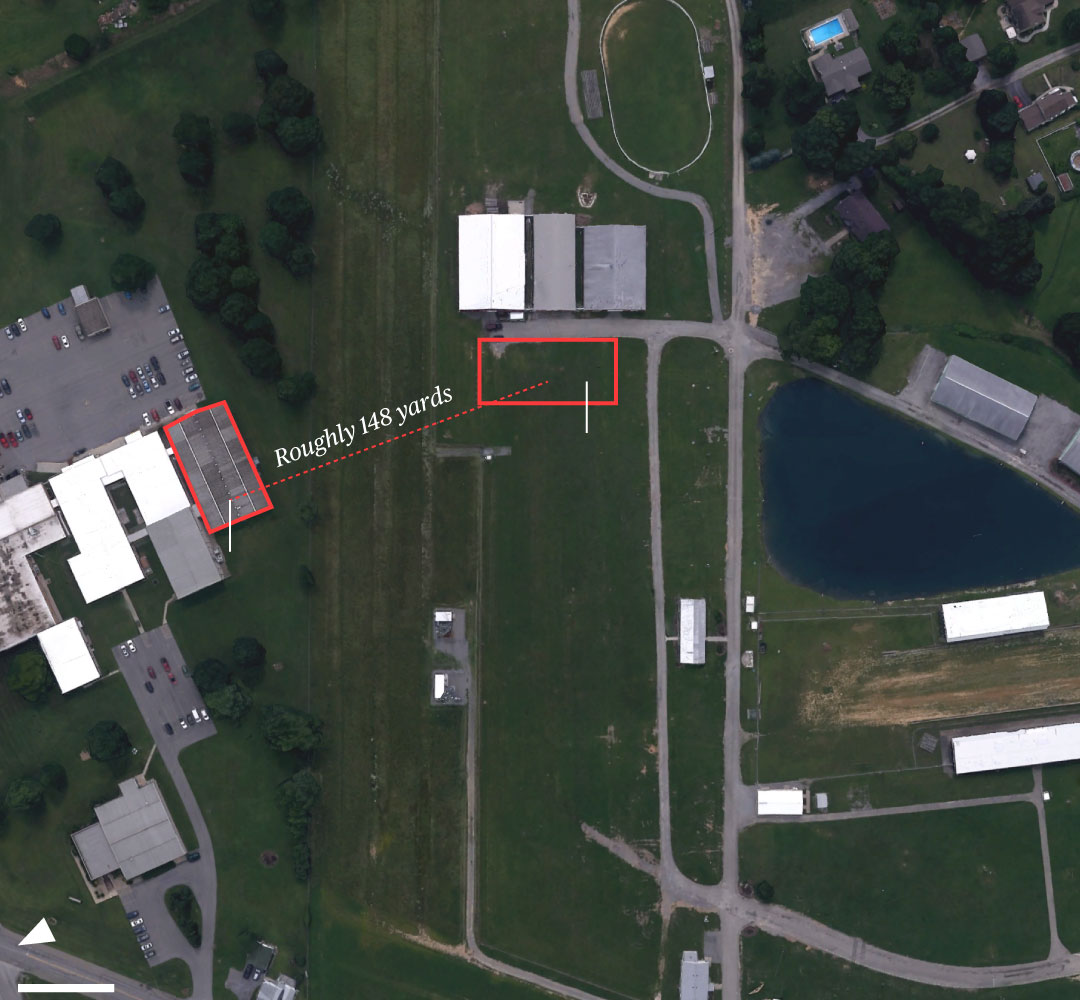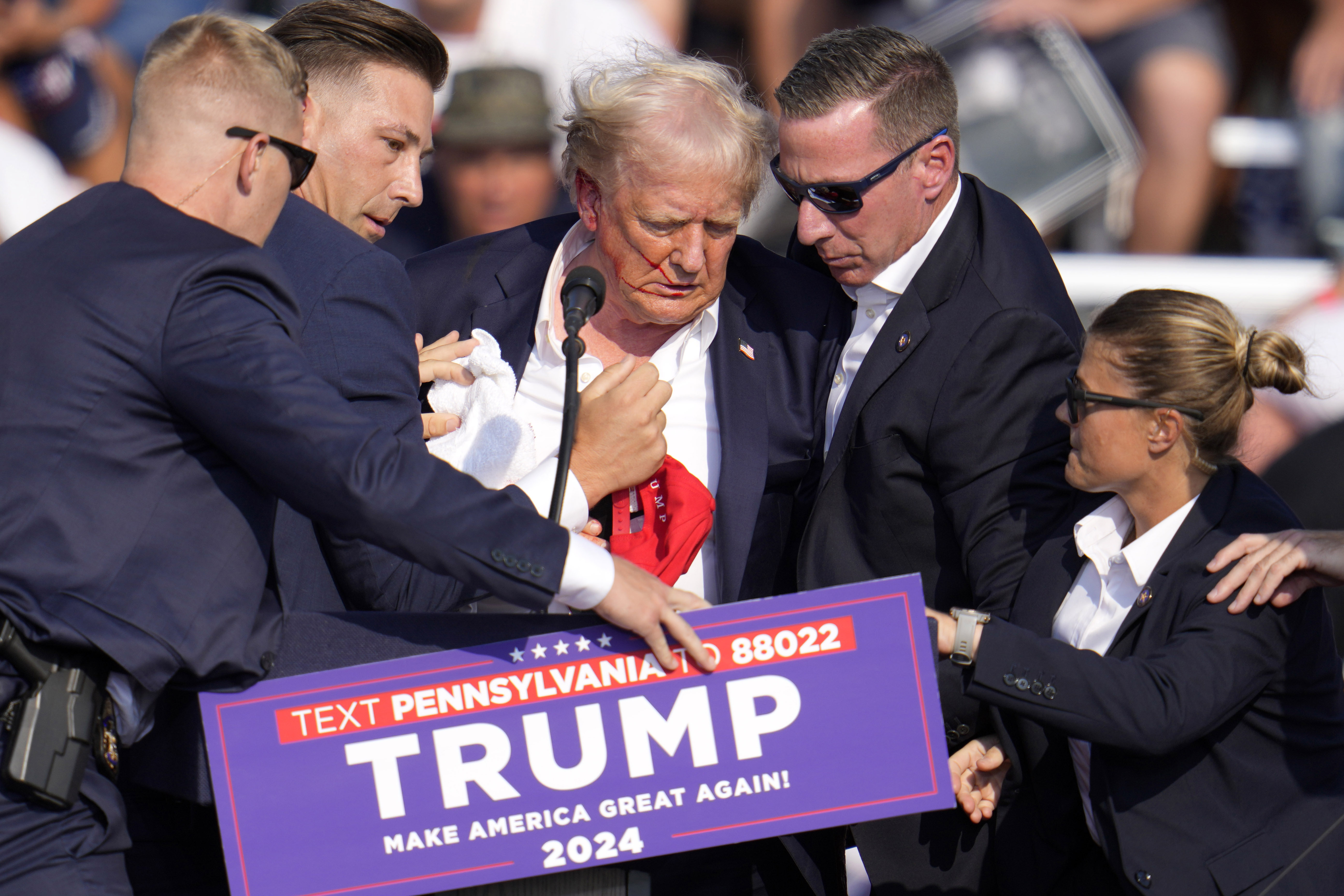How does a gunman, in plain view of some spectators, manage to open fire on a former president at a campaign rally protected by federal and local law enforcement?
That is the frightening and unanswered question facing the country — and security officials — after Donald Trump said he suffered a graze wound on his right ear while he was speaking in a field in Butler, Pennsylvania, and left the stage with a bloodied head.
Watch NBC6 free wherever you are
Secret Service personnel shot and killed the gunman immediately after he opened fire, the agency said. A spectator was killed and two additional spectators were injured, but it was not immediately clear who shot them. Law enforcement is investigating the shooting as an assassination attempt.
The attack, in which the unidentified gunman fired multiple shots at the stage from a roof outside the venue’s security perimeter, appeared to be the result of a grave lapse, perhaps the biggest since President Ronald Reagan was shot and wounded outside a Washington hotel in 1981.
Get local news you need to know to start your day with NBC 6's News Headlines newsletter.
Security experts said it was difficult, and perhaps impossible, to eliminate every threat, particularly with long-range weapons and outdoor events.
But some said routine precautions should have prevented the shooter from getting onto the nearby roof.
Steve Nottingham, a former SWAT commander in Long Beach, California, called Saturday’s shooting “a fundamental security failure.”
He has worked security details for visiting world leaders, including presidents, and now trains officers on how to respond to critical incidents. He pointed at likely breakdowns in the pre-event scouting and real-time monitoring of places a gunman could shoot from.
“They were behind the curve, because they should have had those places covered ahead of time,” Nottingham said.
Jim Cavanaugh, a retired special agent in charge with the Bureau of Alcohol, Tobacco, Firearms and Explosives who has been on Secret Service details, said he was surprised that the shooter was able to occupy an elevated position within rifle range of the rally site.
“Whenever I’ve been with them, every single high ground is taken by them or the local SWAT police,” Cavanaugh said. “There’s nobody allowed walking on rooftops. They command the high ground.”
He said a high-powered rifle like an AR-15 can hit targets 200 yards away. Trump was about 148 yards from the rooftop where the shooter was found dead, NBC News found, based on an analysis of Google Earth images.

Cavanaugh added: “Having been on Secret Service details, it’s amazing to me that somebody was on an elevated position that they didn’t know about.”
Jillian Snider, a retired New York City police officer who was often detailed to political events, said it is routine for law enforcement to do a perimeter check extending a few hundred yards ahead of such an event.
“That doesn’t mean that someone can’t sneakily make their way to one of those positions afterward, especially if it was someone who had done some preplanning,” said Snider, an adjunct lecturer at John Jay College of Criminal Justice. “There are a lot of places in that area to hide, and you can’t monitor every possible position.”
“Someone who is that driven to do something like this will find a way to try and get the job done,” she added.
The Secret Service did not immediately respond to a request for comment.
The FBI is leading the investigation, including its crisis response team members and evidence response technicians, it said in a statement Saturday evening.
Last month, as the presidential campaign heated up, the Secret Service said it was increasing the size of the detail assigned to Trump. The protection was bulked up “to ensure the highest level of security for not only the event sites but the travel in between events,” Secret Service spokesman Anthony Guglielmi said at the time.
Perhaps the first sign that something was going wrong as Trump spoke Saturday came when spectators said they noticed a man with rifle bear-crawling on a nearby roof. One recalled trying to get the attention of law enforcement.
“The police are down there running around on the ground. We’re like, ‘Hey man, there’s a guy on the roof with a rifle,’” the witness told BBC News. “And the police were like, ‘Huh, what?’ Like they didn’t know what was going on. We’re like, ‘Right here on the roof. We can see him from right here. We see him. He’s crawling.’”
A couple of minutes later, the man opened fire, the witness said.
In the front row of the rally, attendees heard a series of pops and saw Secret Service agents jump on the stage. One, who identified herself as Erin, told NBC News that she saw blood on Trump’s ear. She did not fear for her own safety, she said. “We were only concerned about him,” she said, referring to Trump.
Trump said in a post on Truth Social a couple of hours later that a bullet “pierced the upper part of my right ear.”
“I knew immediately that something was wrong in that I heard a whizzing sound, shots, and immediately felt the bullet ripping through the skin,” Trump wrote. “Much bleeding took place, so I realized then what was happening.”
Former Secret Service agent Evy Poumpouras said it is impossible to eliminate every potential threat in a situation like Saturday’s.
Outdoor rallies pose enormous security challenges given the availability of high-powered weapons, Poumpouras said.
“Somebody can be out in the distance and really engage your target from a long range, and there are weapons out there that allow you to do this,” said Poumpouras, who protected multiple presidents, including Barack Obama and George W. Bush, during her 12 years with the Secret Service.
“Let’s say you hunkered this whole area down. You’ve got the magnetometers; you’ve got the tactical element. Everything is locked and tight. How do you secure that outer perimeter? How far do you go? And can you cover everything? That’s a problem.”
She added: “Even if somebody is in an elevated position or not, how do you secure all of those elevated positions when you have weapons with the capabilities that are able to shoot long distances? This is what you are up against.”
This article first appeared on NBCNews.com. Read more from NBC News here:



